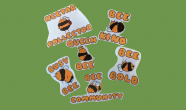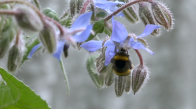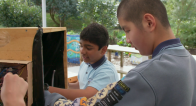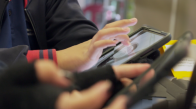Looking after bees
This case study shows how a year 7 general class at St Joseph’s full- primary school in Timaru developed their interest in bees into a wide- ranging, cross-curricular study.
Curriculum links
The students were working at level 4 across all three technology strands within the technological areas of Designing and developing materials outcomes and Design and visual communication. The study also drew on the curriculum areas of Science (Living World) and Mathematics (Geometry and Measurement).
Background
St Joseph’s School is set in a farming community, and many of its students live on small farms or lifestyle blocks. Katie Scannell, a year 7 teacher, watched a “Country Calendar” programme about the increasing threats facing bees. She decided to find out how much her students already knew about bees and to enlist their help with planning ways to sustain, protect, and promote them.
Building on the school’s local curriculum, the teacher used a “provocation” (the threat to bees) that was relevant to the farming community in which most of the students lived.
This innovative activity served as a “hook” to engage students’ interest and stimulate them to ask questions and make discoveries.
The students brought a range of knowledge and experience to the project and were able to share this with each other.
Setting the scene
Katie sparked students’ interest in the new study by setting up the classroom as a “restaurant”, including tablecloths, place settings, and menus. Without giving any reasons, she told the students that most of the items on the menu were “unavailable”. The students were eventually able to deduce (figure out) that bees were essential to all these items.
The students brought varying knowledge, attitudes, and experiences to the ensuing (resulting) discussions. Because of their semi-rural lifestyles, many students were familiar with bees, and some whānau kept hives on their properties. But other students were afraid of bees – associated them with painful stings and thought of them as “enemies”.
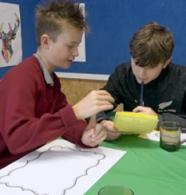
Some students sought out expertise in the local community and shared what they had learnt with the rest of the class. This helped them in developing an important understanding – that the teacher is not the “fount of all knowledge”.
The students took ownership of the study and formulated questions that would drive the project, while avoiding the trap of leaping too quickly to a solution.
Gathering information
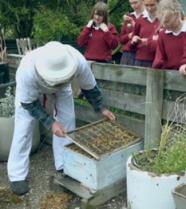
The students were keen to learn more about bees. They researched the Internet and were fascinated to learn how bees could communicate with one another, for example, through a “waggle dance”. They also discovered how essential bees are for pollinating plants and providing food.
The students used their analytical skills to research and identify key information about bees.
A small group of students was able to visit a local beekeeper. He showed them his beekeeper’s suit and opened a hive so they could spot the queen and the drones. The students were excited to see a swarm of bees gathered around a queen in a nearby tree. The group returned to school and reported what they had seen to the rest of the class.
An authentic purpose
By this time, says Katie, the whole class was becoming “attached” to bees. No one now thought of them as “enemies” – rather, the students had been horrified to discover that some scientists believed bees to be “on the verge of extinction”.
“What would happen if there were no bees?” — Noah
“What can we do to help protect the bees?” — Ruby
Collaborative planning
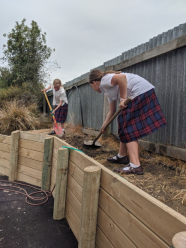
The class brainstormed ideas about how they could help to protect bees. As they discussed their ideas, the students realised that they also wanted to help promote the importance of bees to the community. They selected the ideas that seemed most likely to achieve each of these goals and grouped themselves according to their interests and skills.
The teacher acted as a facilitator, not a director. The students generated the ideas themselves and selected the ones they wanted to work on, creating strong ownership.
The students’ ideas included:
- setting up a bee-friendly garden
- constructing “bug hotels” to help protect the plants the bees rely on
- making “seed bombs”
- producing stickers to promote bees
- making podcasts and a documentary movie to promote the importance of bees.
The teacher rose to the challenge of relinquishing control of the project in order to promote student agency.
“It was wonderful to see all the kids going off into their groups and working on their own projects. It can be a bit scary when you as a teacher have to ‘let go’. But they just leapt at the chance to do something practical. It’s great when you see them using what they’ve learnt and applying it to the real world.” — Katie
The design process
The students were used to a design process that involved continuous discussion, self- evaluation, and a willingness to modify plans to help meet their purpose. They were constantly asking, “Is this really working?” and “What can we do to make it better?”.
This was a strong example of authentic technological practice, involving iteration and design thinking.
A bee-friendly garden
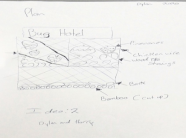
Two new classrooms had just been built, and the space behind them was perfect for a garden. The group began planning, calling on help from locals (including Katie’s mother, a keen gardener) to choose plants that would attract bees. The students measured the space, drew up a planting plan to scale, and were surprised to find how many plants would be needed to fill it.
Local gardeners donated plants and advised the students on how to plant and care for them. One year later, the garden is still flourishing, and the students are actively involved in maintaining it.
Drawing a planting plan helped the students to communicate and test their design, as well as to apply their mathematical thinking. They were developing their technological knowledge in relation to “modelling and evaluating design ideas”.
Bug hotels
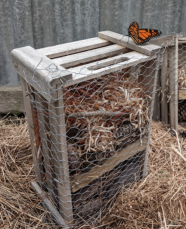
Some students decided to build “bug hotels” that would attract “friendly” insects to the garden and help keep the plants healthy.
They drew up detailed plans for the hotels, selected suitable materials (including timber, nails, and glue), and learnt to use tools. They were determined to use sustainable and environmentally friendly materials.
Oscar designed his hotel in the shape of a hexagon, involving some complex geometry to calculate the angles.
The students’ planning and use of materials and tools illustrate the Technological knowledge strand, and shows that they understood the need to design for a purpose.
The students learnt to self-evaluate, adapting their plans to suit their budget and skills and discussing how to improve their designs.
This project helped them understand the design process," says Katie. "They'd ask their ideas to the max, and then they'd ask, 'Can we achieve this within the materials available?'".
Seed bombs
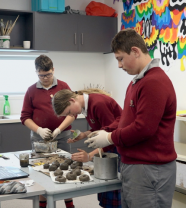
The students were engaging in tuakana-teina relationships with the new-entrant students.
One group made seed bombs, using a soil and compost mix donated by a local company, a bee-attracting wildflower seed mix, clay, and water. They used these for planting at home and around the district to attract more bees.
They then decided to take this idea a stage further and teach children from the new entrants’ class how to make the seed bombs. Soon, the whole junior school became involved, and many of the parents took seed bombs home for planting.
Stickers
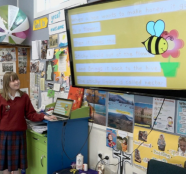
Another group decided to design and make stickers featuring bees. Katie challenged them by asking, “How will this actually help to promote bees?”
In response, the group decided to prepare an informative presentation about bees for the new entrants’ class and to give the children stickers to wear.
The stickers stimulated questions from parents, which allowed the new entrant children to pass on the knowledge they’d gained about the importance of bees.
Podcasts and a documentary
The students came up with a variety of approaches for communicating their messages, adapting these to suit their purpose and audience.
Some students were keen to create videos and podcasts to convey information about bees and promote their importance.
The class analysed a range of videos and podcasts to find elements that made them appealing, conveyed information clearly, and held their audience’s attention.
The students used these details to help them create and evaluate their own projects. For example, one student made a documentary video, modelling his communication style on that of David Attenborough.
If a podcast failed to hold its audience’s attention or convey information clearly, the students discussed how to improve it, and made changes.
The podcasts and documentary were shared with other classes and at assembly. The documentary was also shared on the class Facebook page, so that parents and whānau could view it.
Next steps
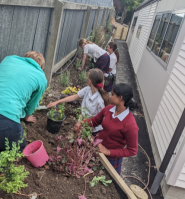
One year later, the students (now in year 8) are continuing to maintain the garden and monitor the bug hotels. They have been delighted to discover that caterpillars from the garden’s swan plants have built their cocoons in some of the hotels.
“We live in a farming community,” says Katie, “where lots of sprays and insecticides are used, and these have a risk for bees. If we’d had more time, we’d have liked to go to the Council and ask what they are doing to help protect bees.”
The students’ continuing involvement shows that they have taken ownership of their work and see it as a legacy they will leave behind for the school. The project has helped them understand how crucial bees are in our eco-system and the impact of past and future actions on bees’ wellbeing and survival.
Related resources
PDF version and video of this case study
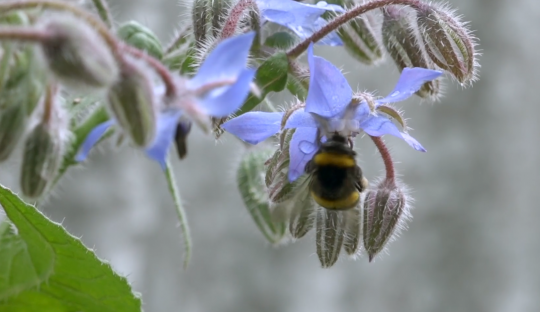
Related videos
Looking after bees (03:09)
Exploring honeybees' impact, year 7 students at St Joseph’s School (Timaru), established and shared with others lasting ways to keep bees flourishing, throughout the school and the planet.Read the case study - Looking after bees....
A self-watering plant system (03:15)
Four year 8 students from Northcross Intermediate collaborated, researched, and worked across the curriculum to design and create a plant-monitoring, self-watering system for keeping the school's indoor plants healthy.Read the case study - A self-watering plant system. ...
Digital animations (04:06)
Working in teams, year 8 students at Greenmeadows Intermediate developed animated videos for Six60’s “Pepeha”. Together, they planned, evaluated, problem-solved, and learned from others’ points of view. Read the case study - Digital animations....

